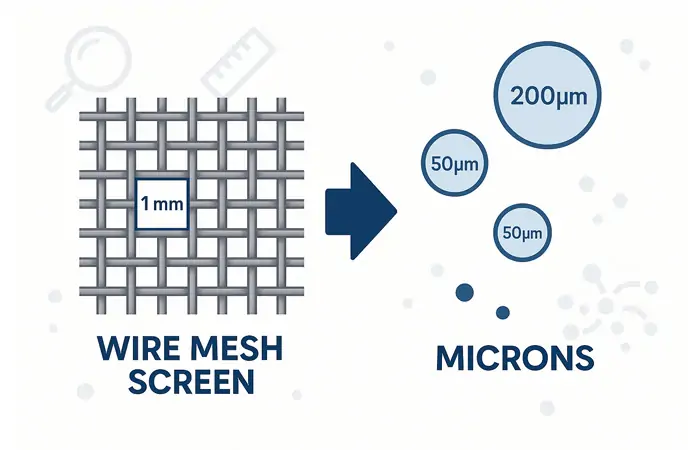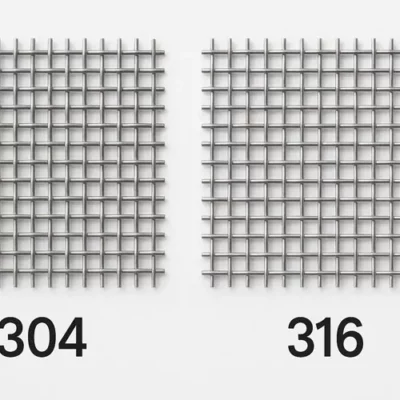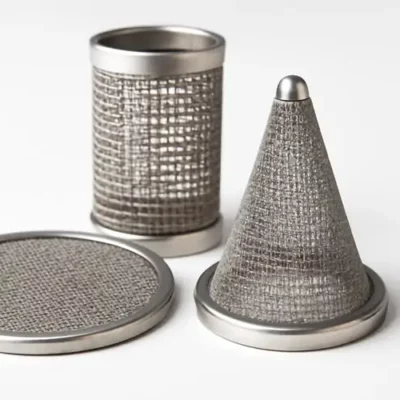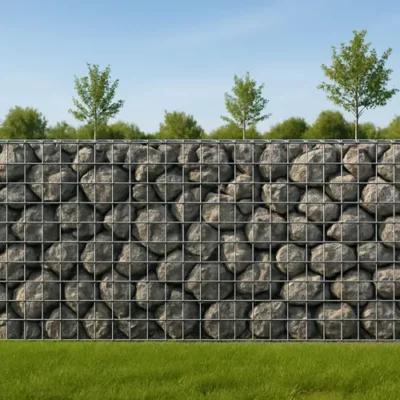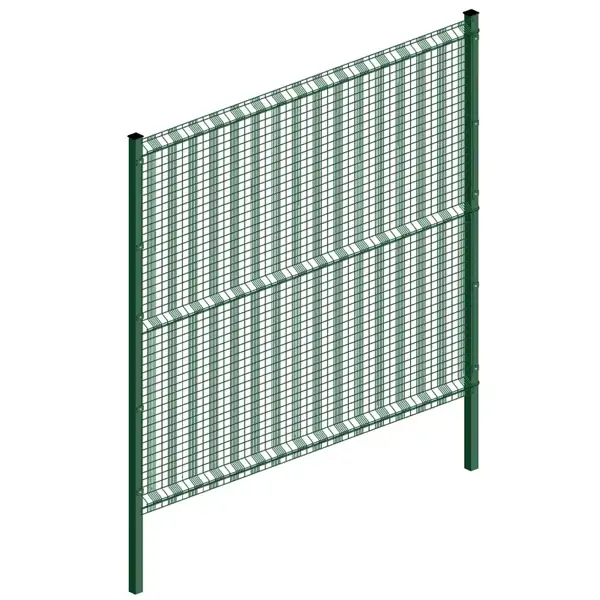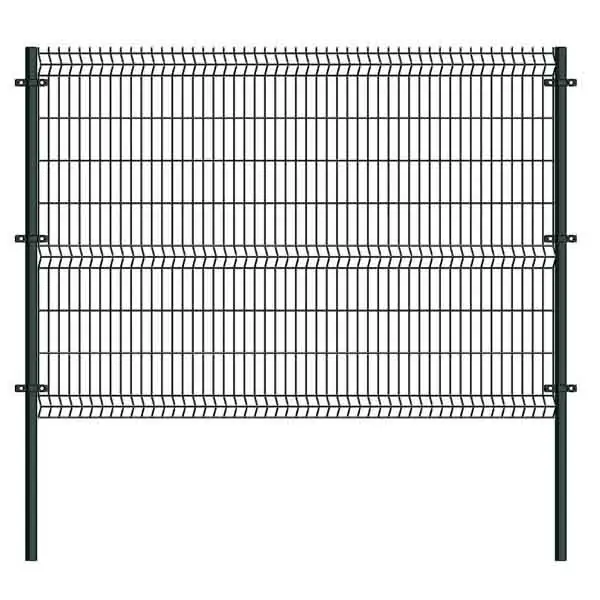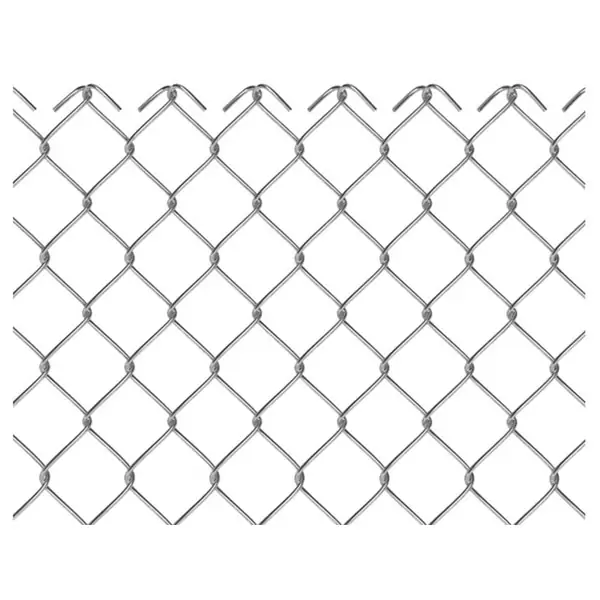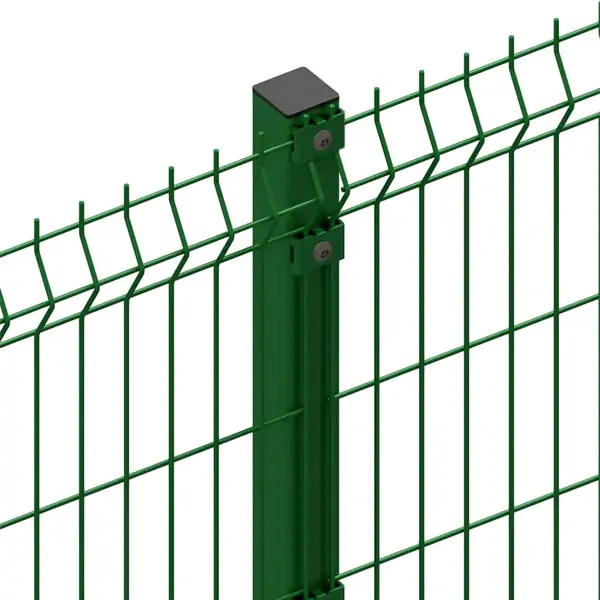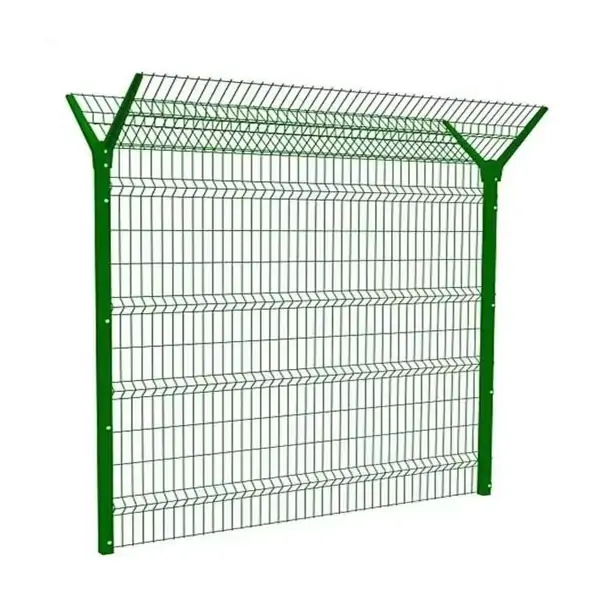جدول المحتويات
تبديلMesh Size vs Micron – What’s the Difference?
When dealing with materials like powders, chemicals, filters, and screens, understanding the relationship between mesh size and micron is essential. Though they both relate to particle size, they represent different concepts.
حجم الشبكة refers to the number of openings in one linear inch of a screen. For examplea 200 mesh screen has 200 openings per inch. As the mesh number increases, theparticle size it allows through becomes smaller.
Micron (or micrometer, symbol: μm) is a unit of length equal to one-millionth of ameter, or 0.001 millimeter. lt directly measures particle diameter or opening sizeIn short.
- Mesh is a count of holes per inch.
- Micron is a measurement of length.
- They are inversely related: Higher mesh = Smaller micron size
Mesh to Micron Conversion chart (with mm & inches)
Below is a handy conversion table showing typical mesh sizes alongside their approximate micron, millimeter, and inch equivalents. Keep in mind actual values vary slightly based on wire thickness and weaving pattern.
| حجم الشبكة | Micron (μm) | Millimeter (mm) | Inch (“) |
|---|---|---|---|
| 10 | 2000 | 2.00 | 0.0787 |
| 50 | 297 | 0.297 | 0.0117 |
| 100 | 149 | 0.149 | 0.0059 |
| 200 | 74 | 0.074 | 0.0029 |
| 325 | 44 | 0.044 | 0.0017 |
| 400 | 37 | 0.037 | 0.0015 |
| 500 | 25 | 0.025 | 0.0010 |
How to Calculate Mesh to Micron (Formulas &Examples)
A common approximation formula to convert mesh to micron is:
Micron size ≈ 14900/Mesh size
This formula works reasonably well for mesh sizes between 50 and 400. It assumes a standard wire diameter but doesn’t account for material or weave variation.
Examples:
- 100 mesh: 14900/100=149 μm
- 200 mesh: 14900/200=74.5 μm
Keep in mind:
- Actual aperture size also depends on the wire diameter.
- Always consult a verified mesh chart for precision work.
How to Determine the Mesh Size of a Screen
Knowing how to verify mesh size manually can be helpful:
- Physical Measurement: Count the number of openings within a 1-inch span using a ruler or caliper.
- Microscopy or lmage Tools: Use magnification to count tiny mesh openings.
- Specification Sheets: Manufacturers often provide detailed mesh size and wire diameter.
The actual opening size (aperture) can be calculated as:
Opening =(25.4 mm/mesh count) – wire diameter
Use Our Free Mesh to Micron Calculator
To make your work easier, try our online Mesh to Micron Converter Tool.
- Step 1: Enter your mesh number.
- Step 2: The tool instantly displays the approximate micron size.
- Step 3: (Optional): input wire diameter for more precise results.
When to use it:
- Quick reference during product selection.
- Double-checking specs from suppliers.
- Training and documentation.
Industry Applications: Why Mesh and Micron Matter
Understanding mesh and micron helps in making informed decisions in many industries:
1. Pharmaceuticals
- Powder size affects dissolution rates and bioavailability.
- Common range: 60 to 400 mesh.
2. Food & Beverage
- Mesh defines flour grades, spice texture, and tea leaves filtration.
3. Cannabis & Botanical Extraction
- Screens used for dry sifting and resin separation (e.g., 120-160 μm)
4. Mining & Metallurgy
- Particle classification and ore separation.
5. Water & Air Filtration
- Micron rating critical for blocking contaminants.
International Standards and Mesh Classifications
Several systems are used globally:
- US Standard Sieve Series (ASTM E11): Widely used in North America.
- Tyler Mesh System: Based on √2 progression, used in mining.
- IS0 3310: International standard with metric-based sieve sizes.
Each system may use slightly different mesh-to-opening calculations, so always match the standard your supplier uses.
Frequently Asked Questions (FAQs)
Q1: What does 200 mesh mean?
It means 200 openings per inch; allows particles smaller than ~74 microns to pass.
Q2: ls a higher mesh finer or coarser?
Higher mesh means finer, smaller particles can pass through.
Q3: Can l convert micron to mesh?
Yes, using the inverse formula: Mesh ≈ 14900/Micron (approximate).
Q4: What is the smallest mesh size?
Industrial screens go up to 500 mesh or more, filtering particles under 25 μm.
Q5: What mesh size is 100 microns?
About 14900/100=~149 mesh (approximate).
Conclusion-Mastering Mesh and Micron Conversions
Understanding how to convert mesh to micron helps in material selection, product quality control, and technical communication. Whether you’re choosing a screen for herbal extraction or ensuring pharmaceutical powder purity, using charts, calculators,and proper standards ensures success.

